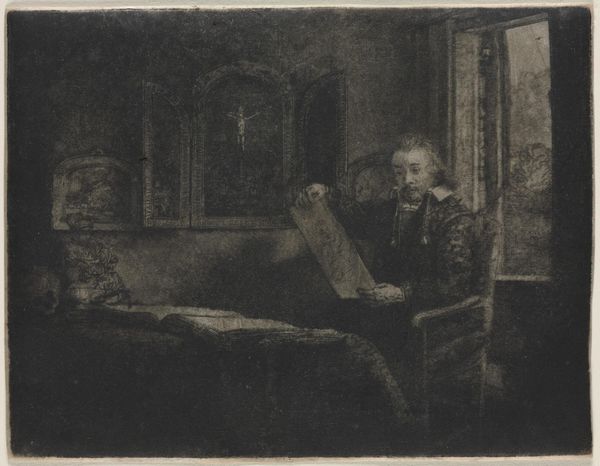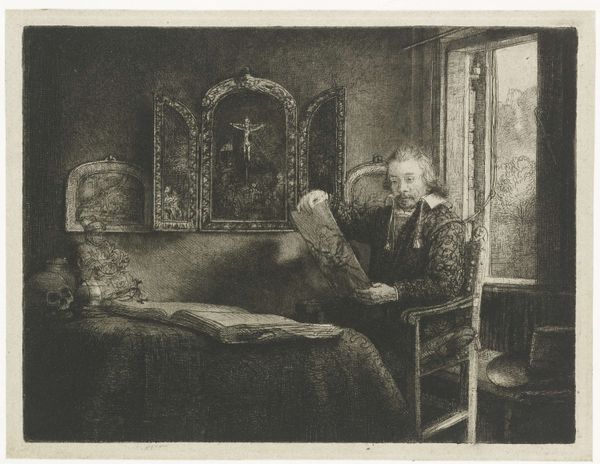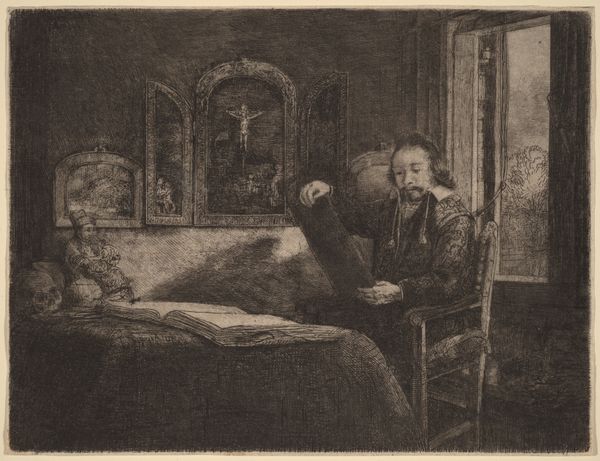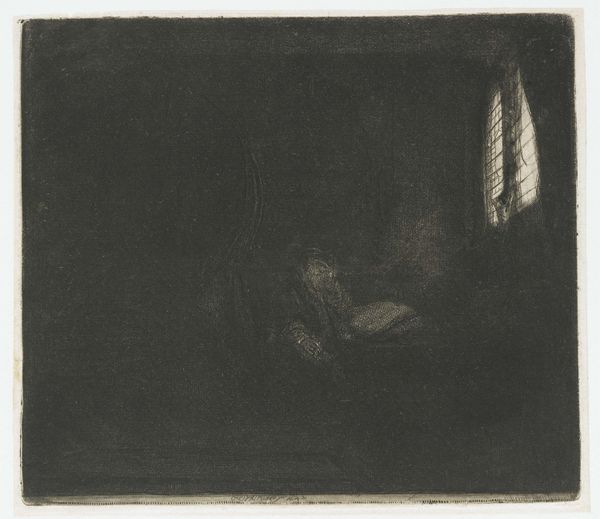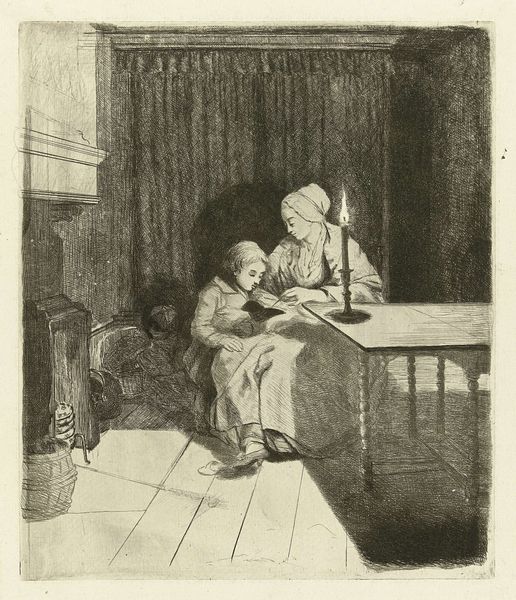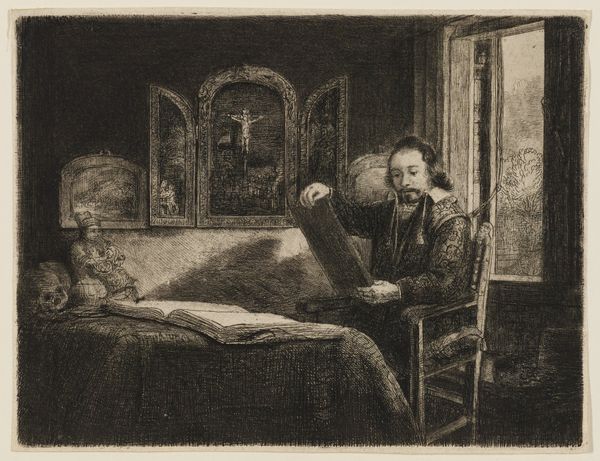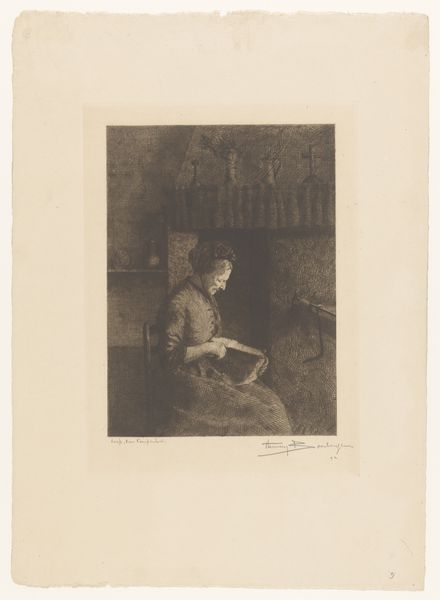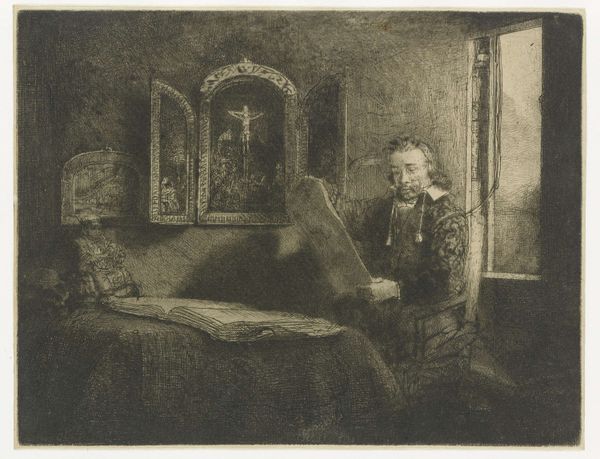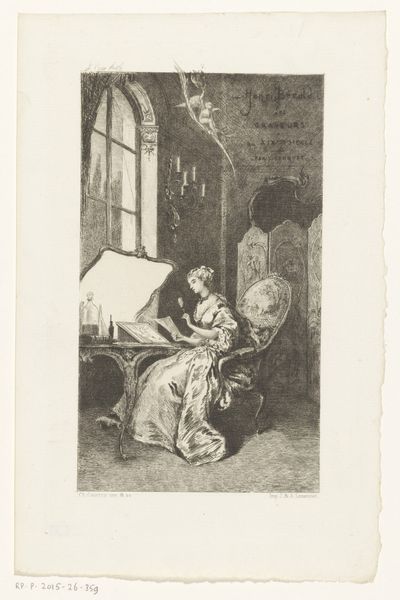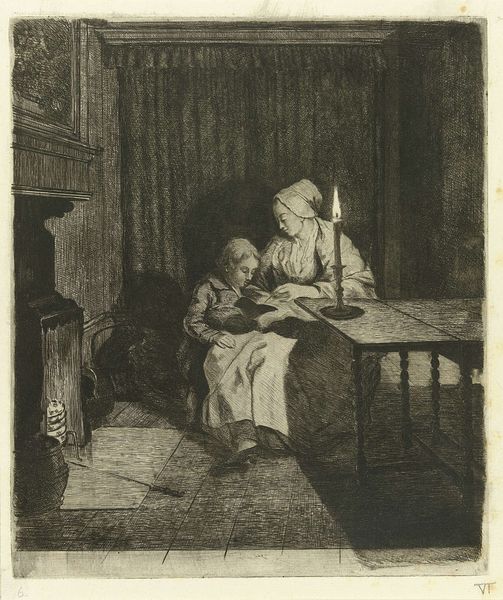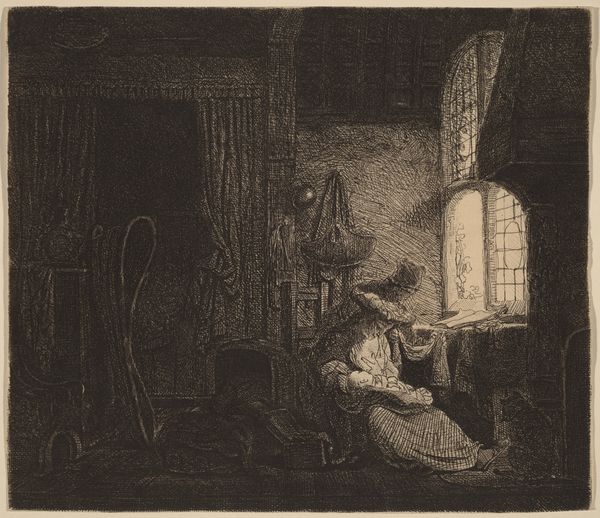
print, etching
#
portrait
#
baroque
#
dutch-golden-age
# print
#
etching
#
genre-painting
Dimensions: plate: 15.9 x 20.6 cm (6 1/4 x 8 1/8 in.) sheet: 16.2 x 20.9 cm (6 3/8 x 8 1/4 in.)
Copyright: National Gallery of Art: CC0 1.0
Editor: We’re looking at Rembrandt van Rijn’s etching "Abraham Francen," created around 1657. It's incredibly detailed and bathed in this sort of hazy light that creates such an intimate, quiet feeling. What compositional elements do you find most striking? Curator: Immediately, I am drawn to the dynamic interplay of light and shadow. The chiaroscuro, characteristic of Rembrandt, models the figure and the interior. Observe how the artist uses hatching and cross-hatching, a printmaker's method, to construct tonal values and give form to shapes and textures. Editor: It seems very baroque because of the light and shadow, but also different somehow. The image looks staged. Curator: I note how Rembrandt constructs a balanced composition despite the off-center placement of the figure. How might one analyse the effect created by the open window on the right, in juxtaposition with the dark interior space? Note how it echoes with a similar geometric construction of open and closed shapes on the left, constructed by pictures. Editor: It feels as though the triptych of religious icons along with the window is in conversation with Abraham. This makes me ask how the light helps the eye to travel through the scene? Curator: Light functions almost as a compositional tool, guiding the viewer's eye from the window to the subject's face and the paper that he holds. Did you also note that Rembrandt's use of line quality suggests depth and form? He concentrates linear details to add texture to his robes and create the man's presence, but fades as light diminishes to almost nothing. This demonstrates that the light comes from a concentrated, external source from beyond the window, but is almost not present behind Abraham. Editor: Looking closely at Rembrandt's sophisticated method, the open window, the posture of the subject and, his robes I have a fresh sense of just how much intention and composition went into this. Curator: And through careful assessment of details such as these, we may advance a coherent explanation of artistic construction.
Comments
No comments
Be the first to comment and join the conversation on the ultimate creative platform.
